Prompt: an ethereal scene embodying the essence of Taoism, where the interplay of Yin and Yang harmonizes with the flow of nature, reflecting balance, simplicity, and the interconnectedness of all things


Prompt: the core symbolism of Taoism by portraying the interplay of Yin and Yang, the Taoist Taijitu, with elements reflecting the cyclical nature of life, harmony, and the eternal dance between opposites


Prompt: A spiritual picture, a line passing through the realms of yin and yang, entwining the living and the dead


Prompt: Creating a photorealistic image that captures the essence of \"Zen\" can be a rewarding artistic endeavor. Zen, which is deeply rooted in Buddhist philosophy, emphasizes simplicity, naturalness, and a sense of tranquility. To visualize this concept, you would typically want to focus on natural elements, minimalist design, and a peaceful ambiance. Here is a step-by-step guide to help you create a photorealistic Zen-themed image: Choose Your Main Subject: Consider subjects that evoke calmness and serenity, such as a Zen garden, a simple still life with a bonsai tree, or smooth stones in sand. Select a Color Palette: Stick to muted, earthy tones like soft greens, warm browns, and grays to reinforce a natural and calming aesthetic. Plan the Composition: Aim for a balanced and harmonious composition. Use the rule of thirds to position key elements. Leave plenty of negative space to enhance the Zen concept of ma (negative space), which emphasizes the things that aren't there as much as the things that are. Set the Lighting: Soft, diffused lighting can help to create a serene mood. Consider the time of day that best reflects the peace of Zen, like early morning or dusk. Incorporate Texture: Detailing with texture such as raked sand patterns or the bark of a bonsai tree will add to the realism. Add Simplistic Elements: Elements like a single leaf or pebble can symbolize the Zen principle of kanso (simplicity). Focus on Detail and Realism: Pay attention to small details like shadows, reflections, and textures to enhance the photorealistic quality. Post-Processing: Use photo editing software to fine-tune colors, contrast, and saturation, and to ensure a natural look is maintained. Review and Reflect: Look at the image as a whole and consider if it truly conveys a sense of Zen. It should inspire a viewer to feel more mindful, present, and at peace.


Prompt: A man driving a car, strict costume style, rain, a frame from a movie, a poster for a movie, a beautiful red car on the background
Style: Photographic




Prompt: Choose an image that conveys tranquility and release, such as a serene landscape, a person in meditation, or soft abstract patterns, to illustrate the message of finding peace by letting go of discord and resentment.


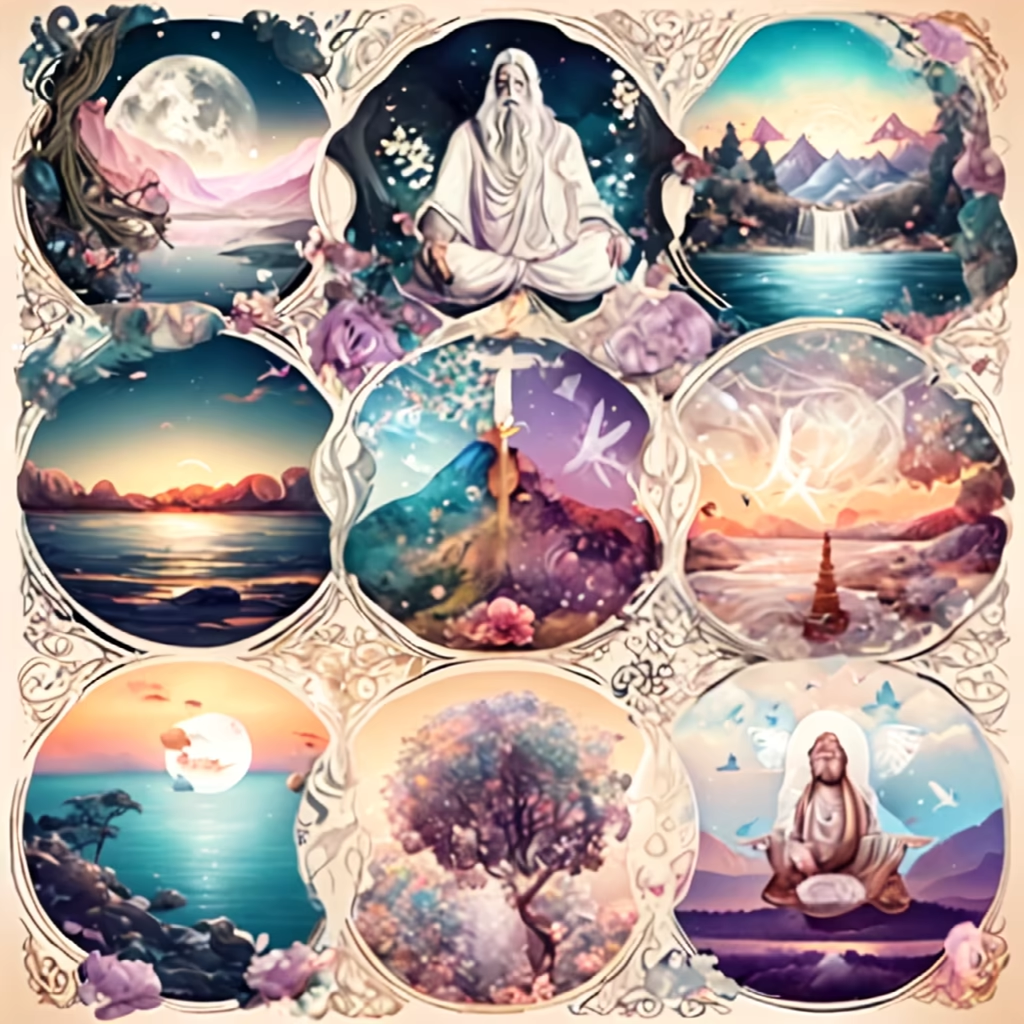
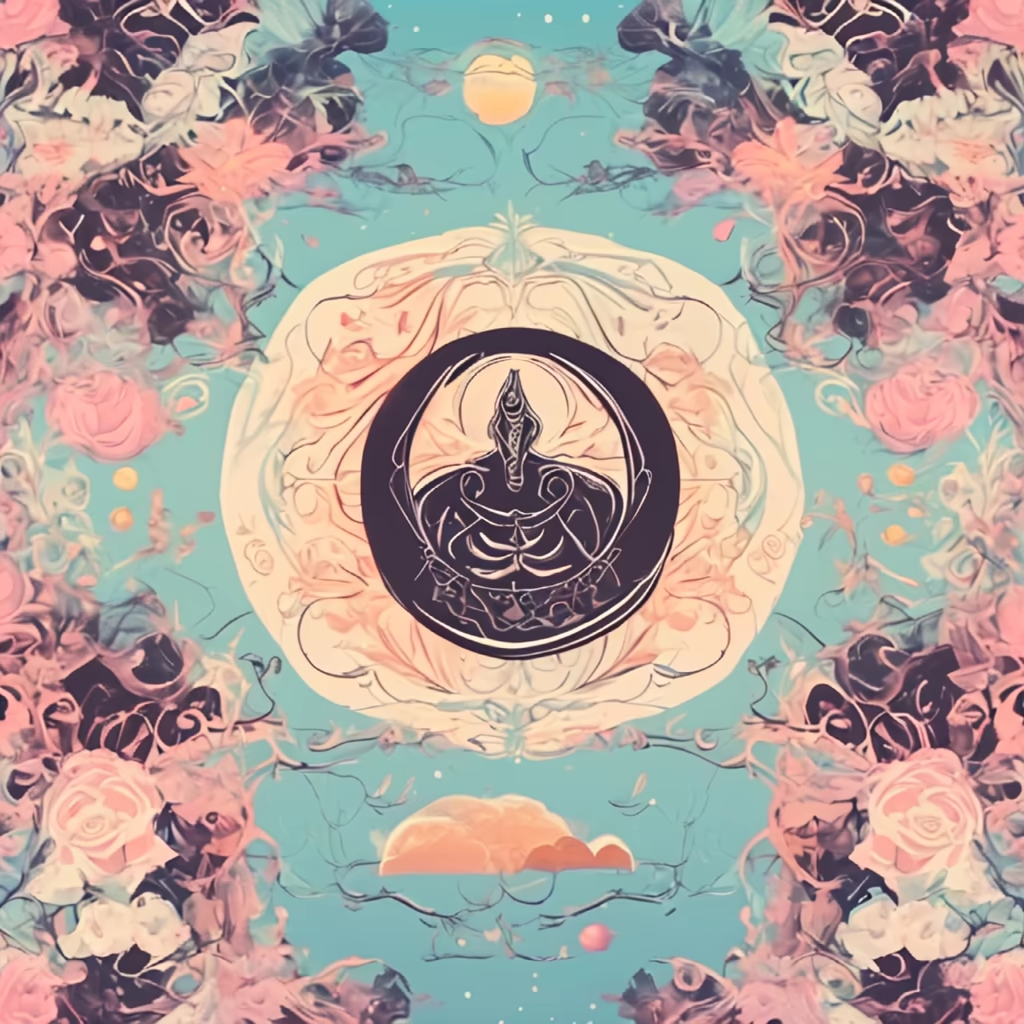
Prompt: yin-yang symbol with traditional Balinese elements, soul, colors inspired by Balinese nature, such as soft green, sea blue or brown earth tones, abstact, simplify
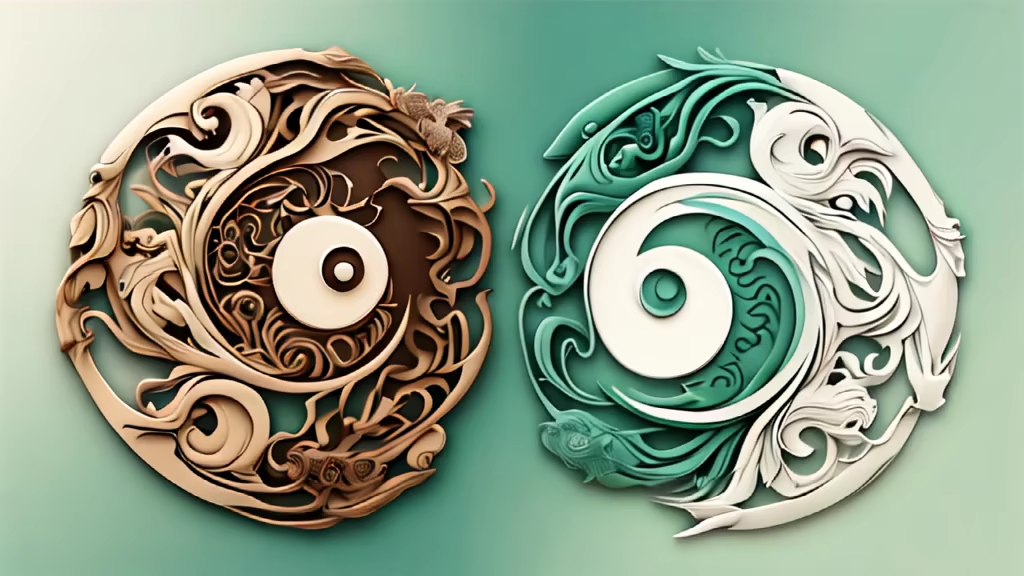
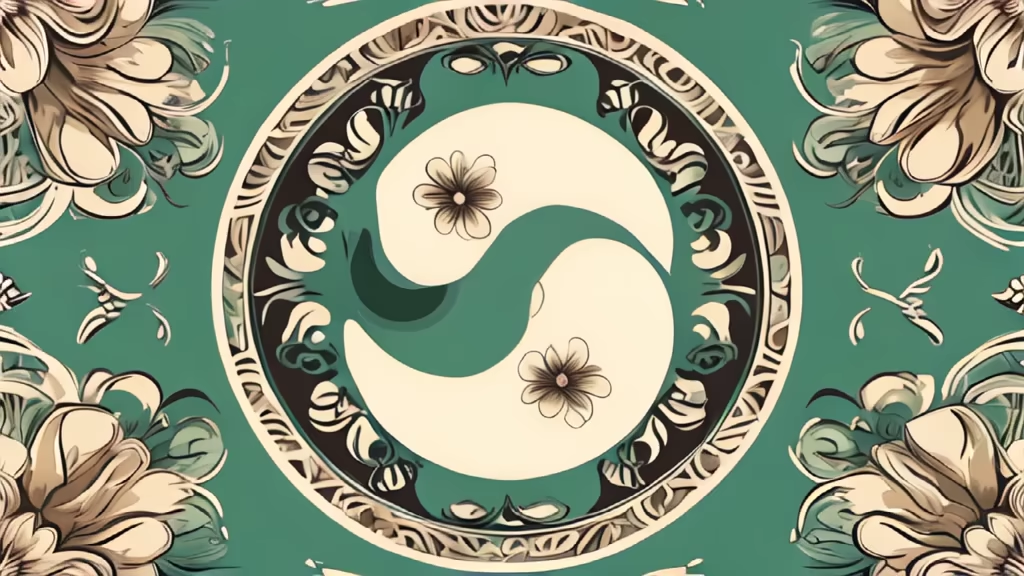
Prompt: Generate an artistic and surreal Chinese landscape painting where the natural elements are arranged to form the Chinese character '代'. The landscape should feature ethereal, flowing mountains, ancient pine trees, and tranquil water elements that together mimic the strokes of the character. The color scheme should be composed of soft, muted greens, blues, and earthy browns to evoke a feeling of serenity and the mystical. Traditional Chinese architecture, such as pagodas, and natural features like waterfalls should be woven seamlessly into the background, adding to the cultural depth of the piece. Light and shadow should be expertly used to give the landscape depth, highlighting the misty atmosphere typical of classical Chinese paintings






Prompt: Generate an artistic and surreal Chinese landscape painting where the natural elements are arranged to form the Chinese character '代'. The landscape should feature ethereal, flowing mountains, ancient pine trees, and tranquil water elements that together mimic the strokes of the character. The color scheme should be composed of soft, muted greens, blues, and earthy browns to evoke a feeling of serenity and the mystical. Traditional Chinese architecture, such as pagodas, and natural features like waterfalls should be woven seamlessly into the background, adding to the cultural depth of the piece. Light and shadow should be expertly used to give the landscape depth, highlighting the misty atmosphere typical of classical Chinese paintings。


Prompt: Generate an artistic and surreal Chinese landscape painting where the natural elements are arranged to form the Chinese character '代'. The landscape should feature ethereal, flowing mountains, ancient pine trees, and tranquil water elements that together mimic the strokes of the character. The color scheme should be composed of soft, muted greens, blues, and earthy browns to evoke a feeling of serenity and the mystical. Traditional Chinese architecture, such as pagodas, and natural features like waterfalls should be woven seamlessly into the background, adding to the cultural depth of the piece. Light and shadow should be expertly used to give the landscape depth, highlighting the misty atmosphere typical of classical Chinese paintings。 \"代\" in it


Prompt: An abstract convergence of twisting dimensions, vivid hues, and ethereal shapes defying conventional reality. A visual journey into the realm of the inexplicable, inviting contemplation and sparking boundless imagination




Prompt: A man driving a car, strict costume style, rain, a frame from a movie, a poster for a movie, a beautiful red car on the background
Style: Tile Texture




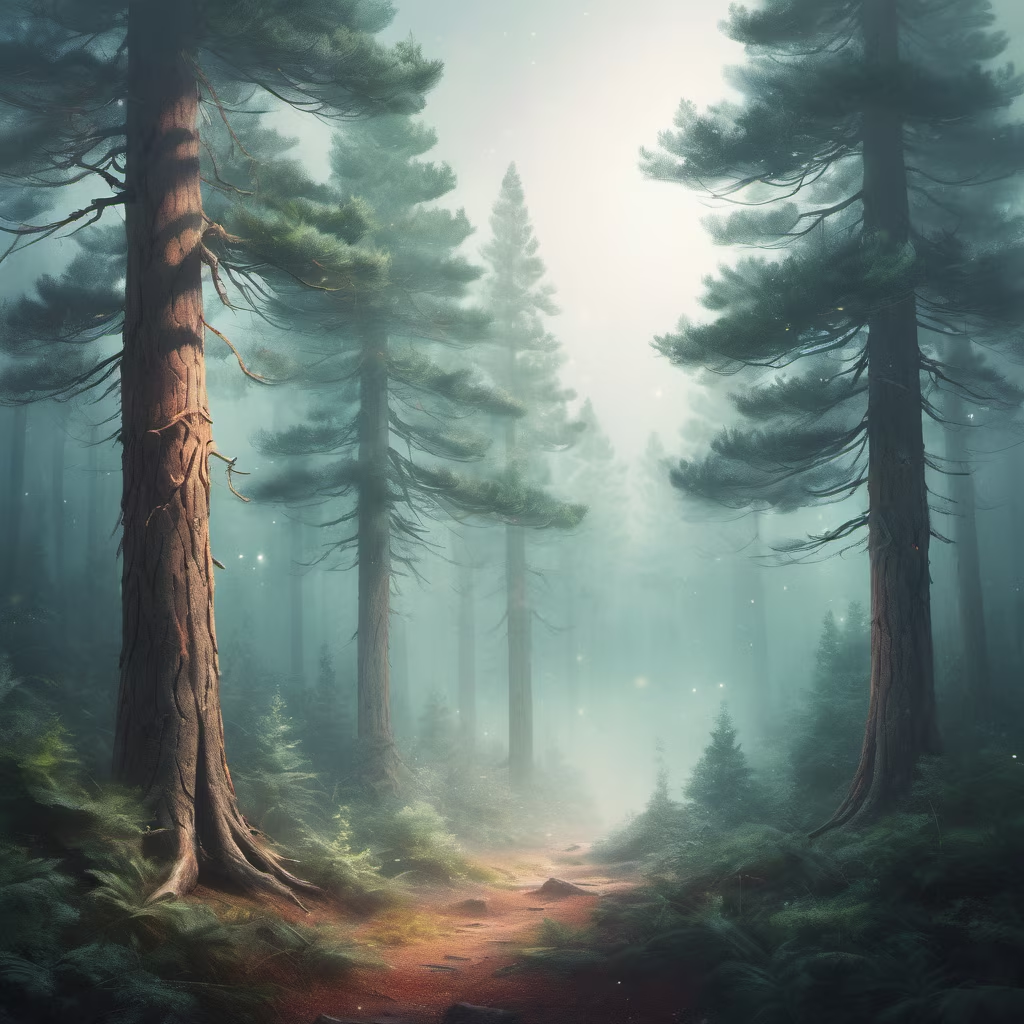



Prompt: **Text-to-Image Prompt: \"Ephemeral Serenity\"**Create a captivating painting that captures the essence of fleeting tranquility. Imagine a serene landscape where soft hues blend seamlessly, evoking a sense of calmness and peace. Incorporate subtle details that invite viewers to lose themselves in the ethereal beauty of the scene. This painting should radiate a timeless charm, making it a cherished piece for those seeking solace in the delicate balance between simplicity and sophistication. The final artwork should convey a profound emotional connection, offering potential buyers a visual escape worth investing in, priced at $1000.




Prompt: Create an abstract masterpiece that captures the serene beauty of a tranquil landscape. Envision a scene where nature unfolds in harmonious splendor – imagine lush, vibrant trees with foliage that dances in the gentle breeze. Picture the ebb and flow of a meandering stream, its waters reflecting the play of sunlight. Embrace the essence of the landscape, allowing the colors to evoke the emotions of a peaceful retreat. Use your brushstrokes to convey the fluidity of the water, the majesty of the trees, and the overall sense of tranquility. Engage with the canvas as if nature's poetry is unfolding, and let the abstract composition breathe life into a captivating, serene landscape





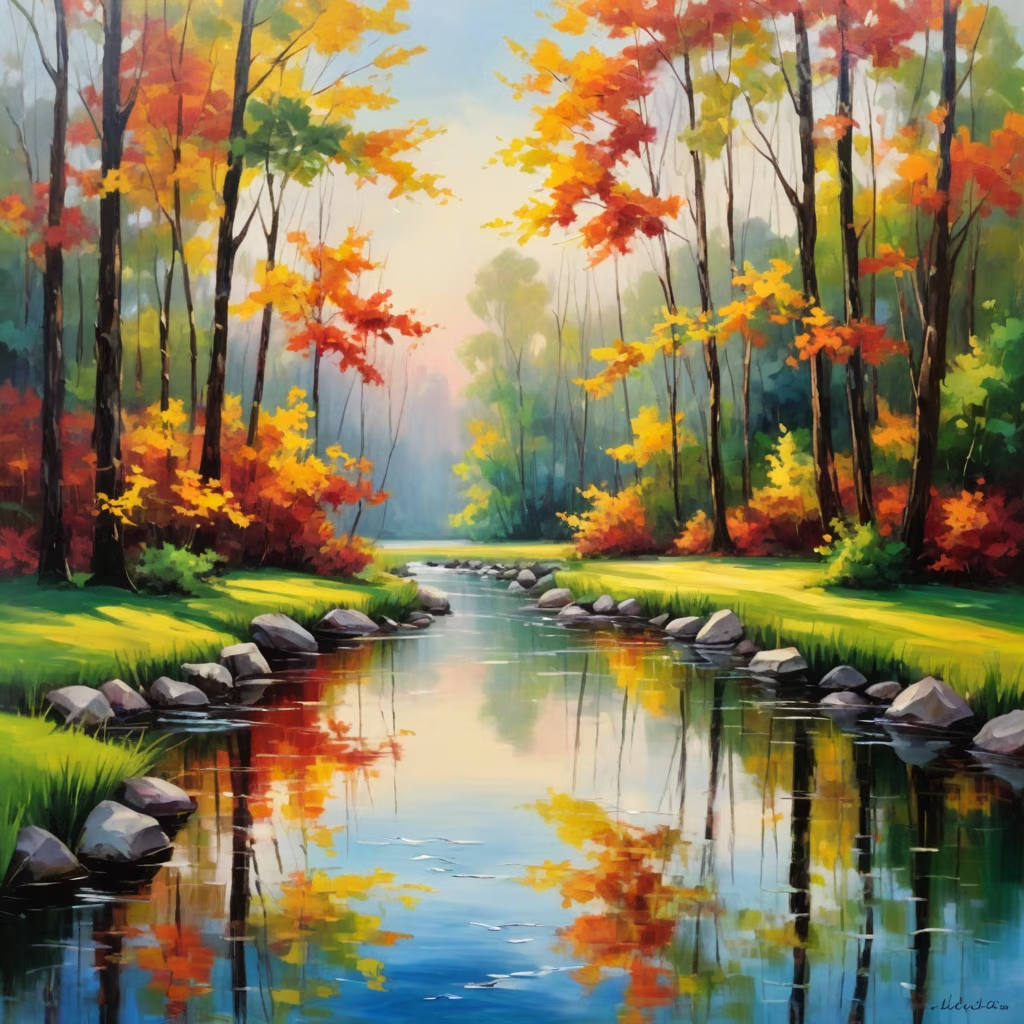
Prompt: The Yin Yang Tai Chi pattern is shocking, mysterious, and unknown oracle bone inscriptions around it.








Prompt: yin-yang symbol with traditional Balinese elements, soul, colors inspired by Balinese nature, such as soft green, sea blue or brown earth tones.
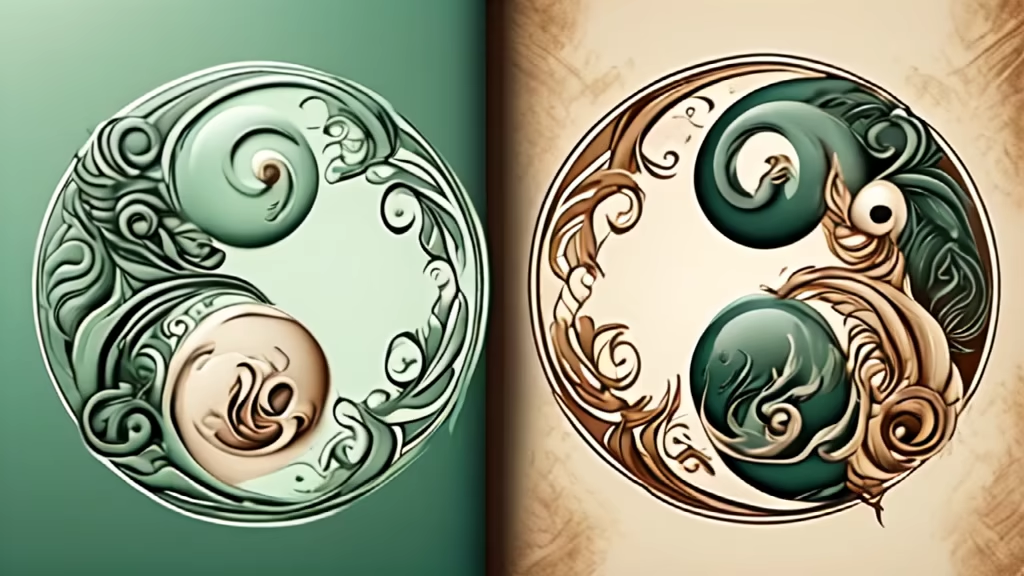
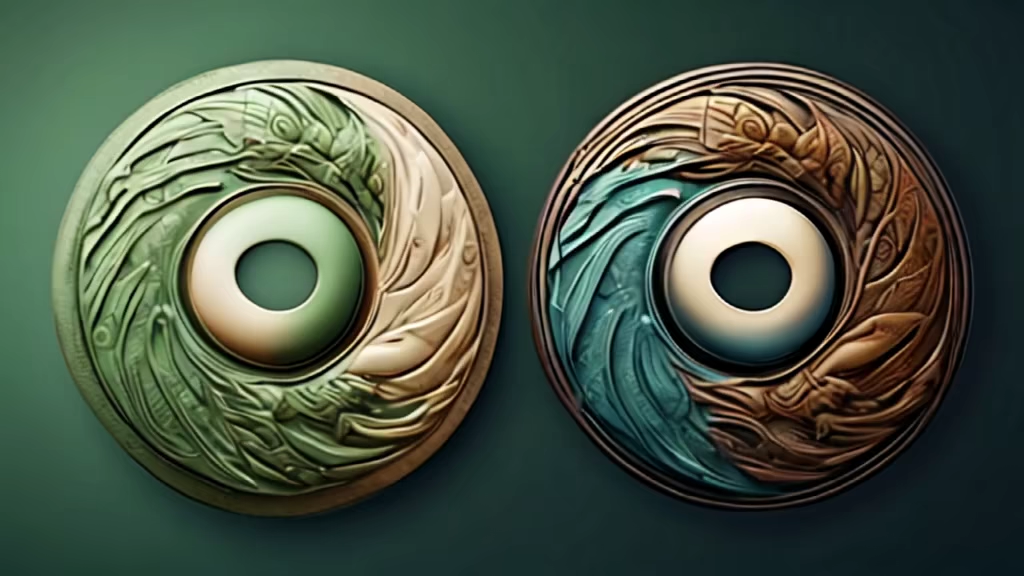


Prompt: Creating a photorealistic image that captures the essence of \"Zen\" can be a rewarding artistic endeavor. Zen, which is deeply rooted in Buddhist philosophy, emphasizes simplicity, naturalness, and a sense of tranquility. To visualize this concept, you would typically want to focus on natural elements, minimalist design, and a peaceful ambiance. Here is a step-by-step guide to help you create a photorealistic Zen-themed image: Choose Your Main Subject: Consider subjects that evoke calmness and serenity, such as a Zen garden, a simple still life with a bonsai tree, or smooth stones in sand. Select a Color Palette: Stick to muted, earthy tones like soft greens, warm browns, and grays to reinforce a natural and calming aesthetic. Plan the Composition: Aim for a balanced and harmonious composition. Use the rule of thirds to position key elements. Leave plenty of negative space to enhance the Zen concept of ma (negative space), which emphasizes the things that aren't there as much as the things that are. Set the Lighting: Soft, diffused lighting can help to create a serene mood. Consider the time of day that best reflects the peace of Zen, like early morning or dusk. Incorporate Texture: Detailing with texture such as raked sand patterns or the bark of a bonsai tree will add to the realism. Add Simplistic Elements: Elements like a single leaf or pebble can symbolize the Zen principle of kanso (simplicity). Focus on Detail and Realism: Pay attention to small details like shadows, reflections, and textures to enhance the photorealistic quality. Post-Processing: Use photo editing software to fine-tune colors, contrast, and saturation, and to ensure a natural look is maintained. Review and Reflect: Look at the image as a whole and consider if it truly conveys a sense of Zen. It should inspire a viewer to feel more mindful, present, and at peace.
Style: Photographic


Prompt: Creating a photorealistic image that captures the essence of \"Zen\" can be a rewarding artistic endeavor. Zen, which is deeply rooted in Buddhist philosophy, emphasizes simplicity, naturalness, and a sense of tranquility. To visualize this concept, you would typically want to focus on natural elements, minimalist design, and a peaceful ambiance. Here is a step-by-step guide to help you create a photorealistic Zen-themed image: Choose Your Main Subject: Consider subjects that evoke calmness and serenity, such as a Zen garden, a simple still life with a bonsai tree, or smooth stones in sand. Select a Color Palette: Stick to muted, earthy tones like soft greens, warm browns, and grays to reinforce a natural and calming aesthetic. Plan the Composition: Aim for a balanced and harmonious composition. Use the rule of thirds to position key elements. Leave plenty of negative space to enhance the Zen concept of ma (negative space), which emphasizes the things that aren't there as much as the things that are. Set the Lighting: Soft, diffused lighting can help to create a serene mood. Consider the time of day that best reflects the peace of Zen, like early morning or dusk. Incorporate Texture: Detailing with texture such as raked sand patterns or the bark of a bonsai tree will add to the realism. Add Simplistic Elements: Elements like a single leaf or pebble can symbolize the Zen principle of kanso (simplicity). Focus on Detail and Realism: Pay attention to small details like shadows, reflections, and textures to enhance the photorealistic quality. Post-Processing: Use photo editing software to fine-tune colors, contrast, and saturation, and to ensure a natural look is maintained. Review and Reflect: Look at the image as a whole and consider if it truly conveys a sense of Zen. It should inspire a viewer to feel more mindful, present, and at peace.
Style: Photographic


Prompt: A mythical deity in the style of Mystic Minimalism, Spiritual simplicity, Tranquil designs, Ascetic aesthetics, Essence of mystique, Monastic lines, Subdued palette


Prompt: Using circles, spirals and flowing lines to express calm and comfort, composition uses abstract elements


Prompt: Create a Chinese landscape painting where the mountains, trees, and bodies of water are artistically arranged to clearly form the character '王'. The scene should be surreal, with elements flowing and twisting in a manner reminiscent of calligraphic strokes. The color scheme should consist of gentle greens, blues, and browns to evoke a peaceful and mystical ambience. Traditional Chinese features such as pagodas, waterfalls, pine trees, and still waters should be subtly woven into the composition. Lighting should add depth and dimension, especially between the mountain ranges and the mists, while ensuring the character '王' stands out as the visual centerpiece of the artwork


Prompt: Taking inspiration from nature, express respect for the beauty of nature through soft brushstrokes and warm tones. Emphasize harmony and tranquility.


Prompt: Painted in the style of traditional Eastern Chinese aesthetics; Painted in the style of traditional Eastern Chinese aesthetics.


Prompt: The bottom part of the character \"李\" can be used to create a flowing river or stream. The strokes can represent the meandering path of the water, adding a sense of movement and tranquility.
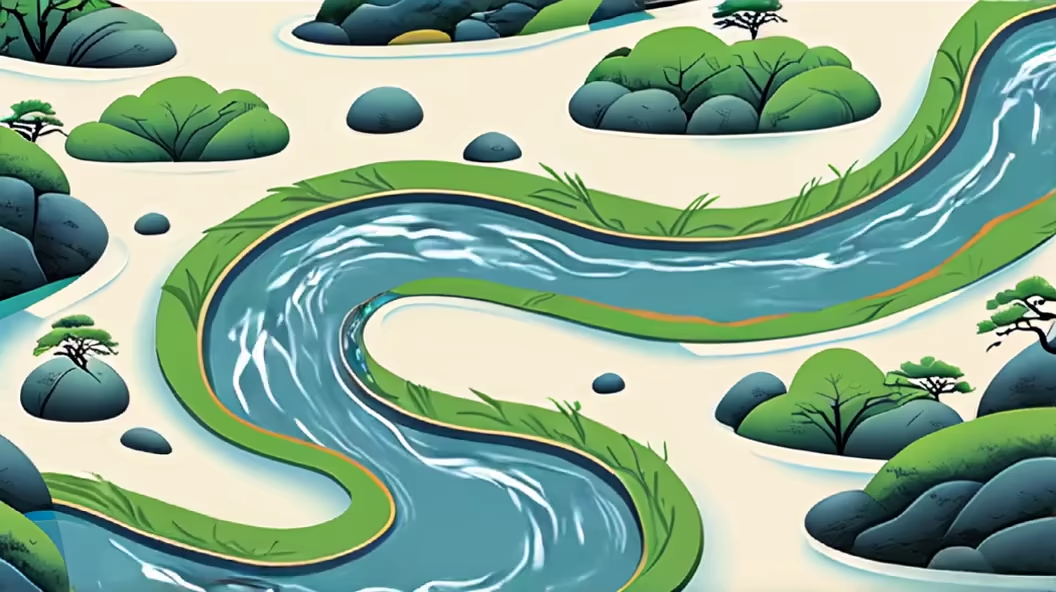

Prompt: Create a harmonious and intricate Chinese landscape painting where the mountains, rivers, and trees are deliberately positioned to depict the Chinese character '王'. Each natural element should be artistically manipulated to reflect the straight and crossing lines of the character, symbolizing the character's king-like structure within the landscape. The scenery should seem to naturally draw itself into the '王' character, with each stroke represented by elements of the environment: vertical ridges for the vertical lines, intersecting paths or rivers for the horizontal stroke, and lush foliage to accentuate the intersections. Employ a subtle color scheme of serene greens, soft blues, and earth tones to maintain the peacefulness and depth of a traditional Chinese painting. Integrate classical Chinese architectural features, such as bridges or pavilions, to complement the character's form. Use dynamic lighting to cast deliberate shadows and highlights that reinforce the visual representation of the character '王', ensuring the entire composition pays homage to the surname while celebrating the beauty of Chinese topography
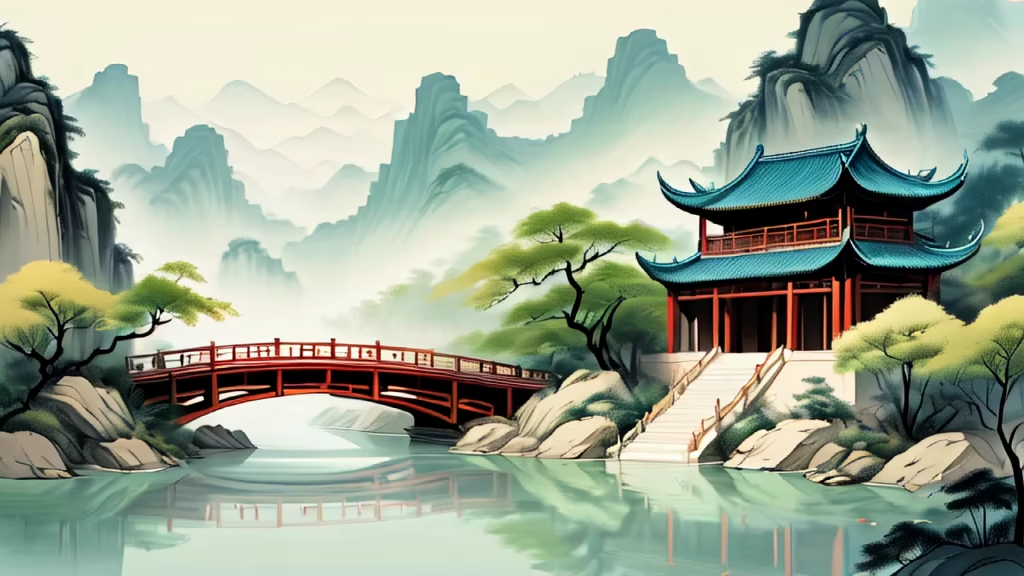
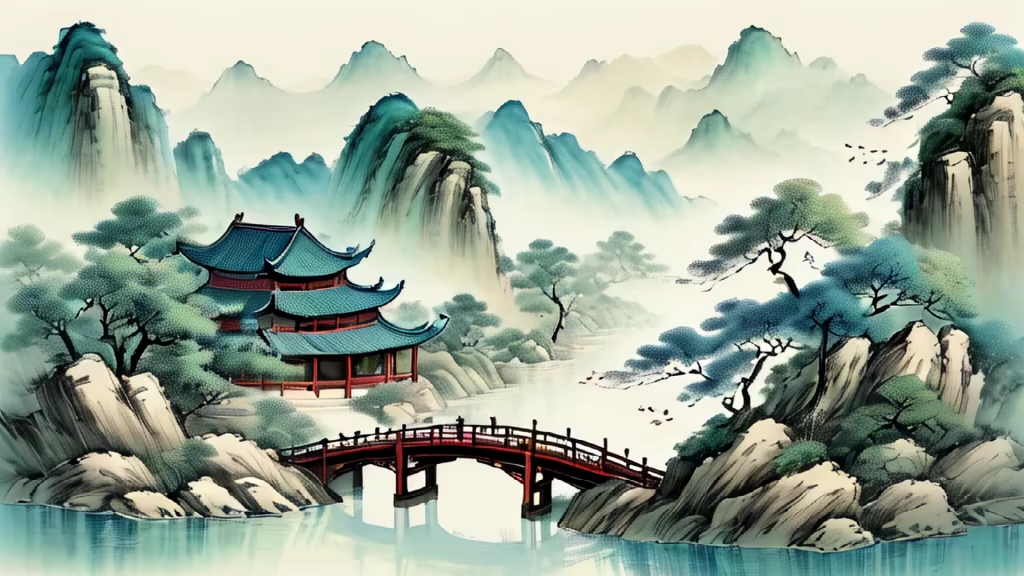
Prompt: Create a harmonious and intricate Chinese landscape painting where the mountains, rivers, and trees are deliberately positioned to depict the Chinese character '王'. Each natural element should be artistically manipulated to reflect the straight and crossing lines of the character, symbolizing the character's king-like structure within the landscape. The scenery should seem to naturally draw itself into the '王' character, with each stroke represented by elements of the environment: vertical ridges for the vertical lines, intersecting paths or rivers for the horizontal stroke, and lush foliage to accentuate the intersections. Employ a subtle color scheme of serene greens, soft blues, and earth tones to maintain the peacefulness and depth of a traditional Chinese painting. Integrate classical Chinese architectural features, such as bridges or pavilions, to complement the character's form. Use dynamic lighting to cast deliberate shadows and highlights that reinforce the visual representation of the character '王', ensuring the entire composition pays homage to the surname while celebrating the beauty of Chinese topography


Prompt: Illustrate a scene depicting inner peace, using visual elements to convey the serenity that comes from dedicating oneself to duty with selflessness, inspired by the teachings of Lord Krishna.


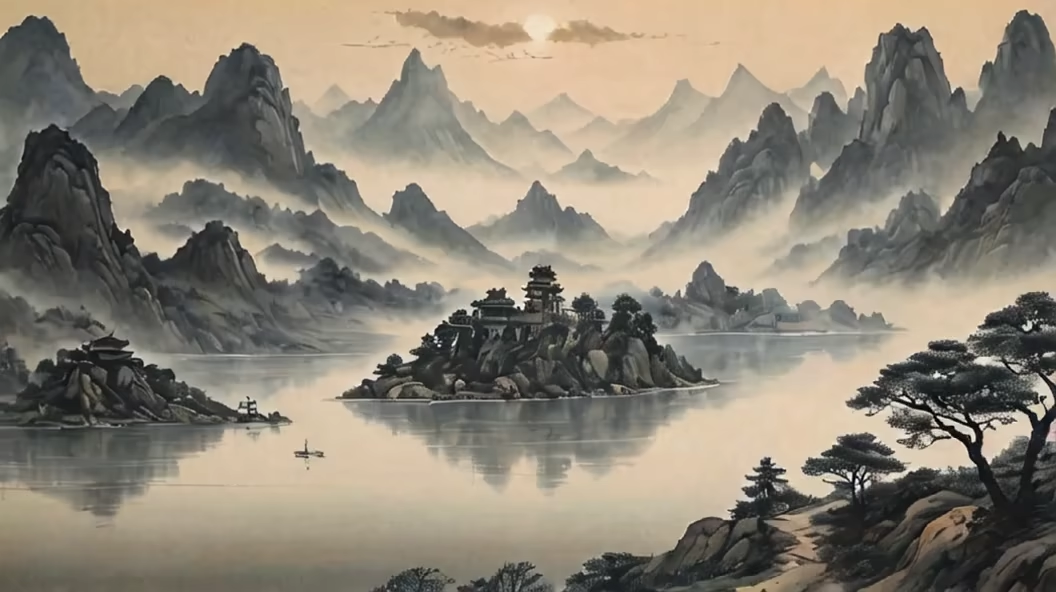
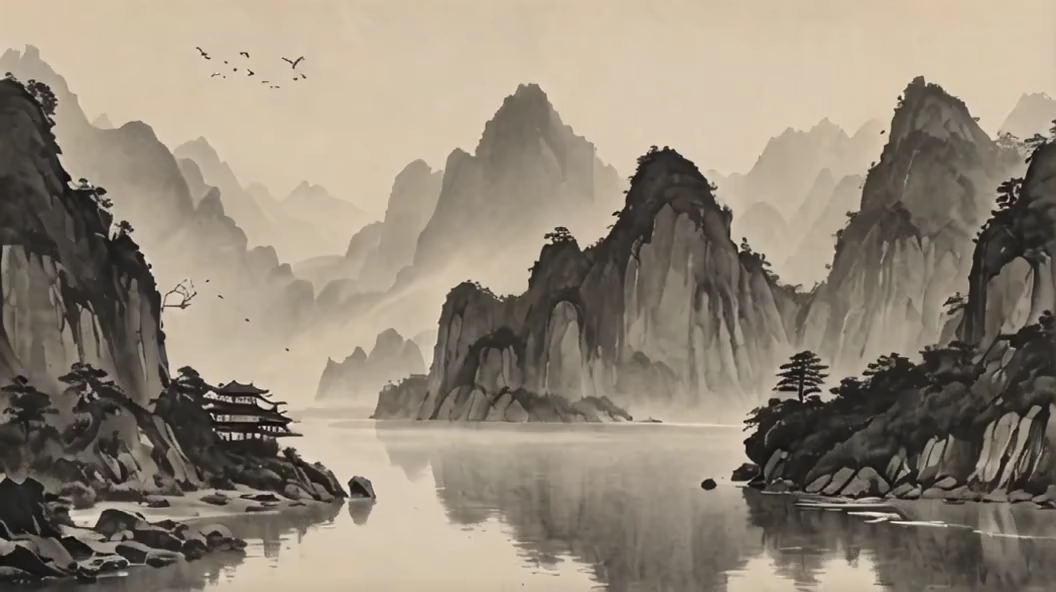
Prompt: Craft a detailed and artistic representation of a Chinese landscape painting, meticulously composed so that the arrangement of mountains, trees, waterfalls, and rivers aligns to form the Chinese character '代'. The natural features should be distinctly stylized, resembling the precise strokes of the character, as if the scenery itself is writing the character in an ancient calligraphic style. Utilize a palette of tranquil greens, misty blues, and muted browns to create a serene and otherworldly atmosphere that is traditional yet dreamlike. Incorporate subtle elements of classical Chinese architecture like pagodas or temples, ensuring they contribute to the overall shape of the '代' character. Apply a masterful interplay of light and shadow to lend depth and contrast, enhancing the visual illusion of the character emerging from the natural landscape
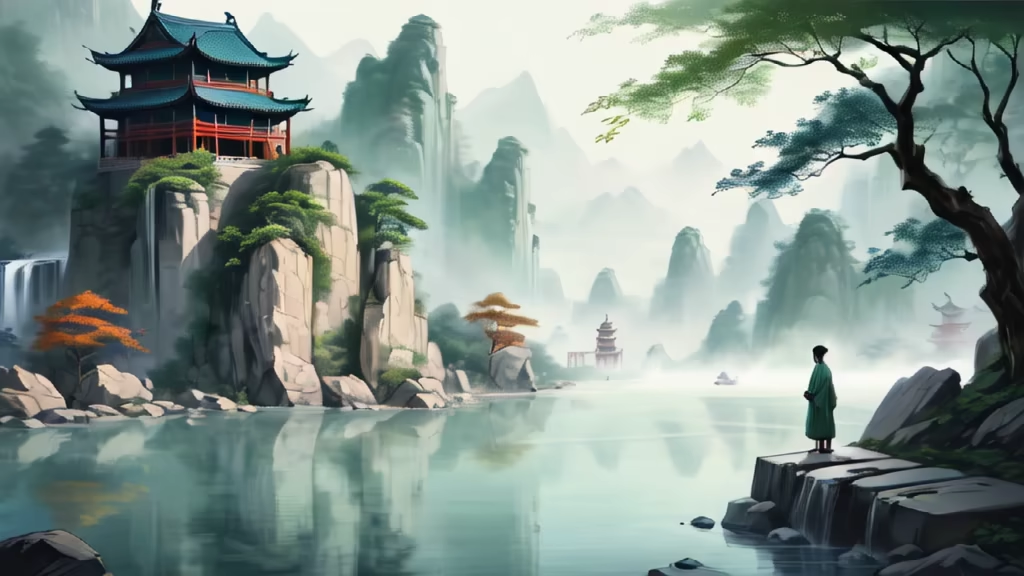

Prompt: This is a world of cultivating immortals. In this world, there are mountains, long rivers, clouds, thunder and lightning on the distant mountains, the land is covered with vegetation, green and lush, and there are many Chinese classical Taoist temples. These scenery are all overlooking seed:1976761871


Prompt: 关键词提取: 1. 乾 (Qián): • Three yang lines • Symbolizes heaven, creation, strength 2. 坤 (Kūn): • Three yin lines • Represents earth, receptivity, stability 3. 震 (Zhèn): • One yang line above two yin lines • Symbol of thunder, dynamism, stimulation 4. 巽 (Xùn): • Two yang lines above one yin line • Symbolizes wind, adaptability, gentleness 5. 坎 (Kǎn): • One yang line above one yin line • Represents water, flow, insight 6. 艮 (Gèn): • One yin line above one yang line • Symbolizes mountain, stillness, firmness 7. 离 (Lí): • Two yin lines above one yang line • Represents fire, illumination, passion 8. 兑 (Duì): • Two yang lines above one yin line • Symbol of lake, communication, harmony


Prompt: Chinese style tea table in the tea room, aromatherapy, modern and minimalist, with people drinking tea next to the table, realistic photography




Prompt: Within the abstract realm of swirling patterns and intricate textures, time slipped away like sand through an hourglass. Surrealistic elements danced in a mesmerizing display, blending reality and imagination. The artwork captured the intangible essence of the passing moments, leaving viewers in a state of contemplative wonder.


Prompt: Embark on a visual odyssey through diverse landscapes, from exotic rainforests to ethereal realms. Focus on the interplay of light, the rich textures of nature, and the evocation of emotions through your artistry. photografik
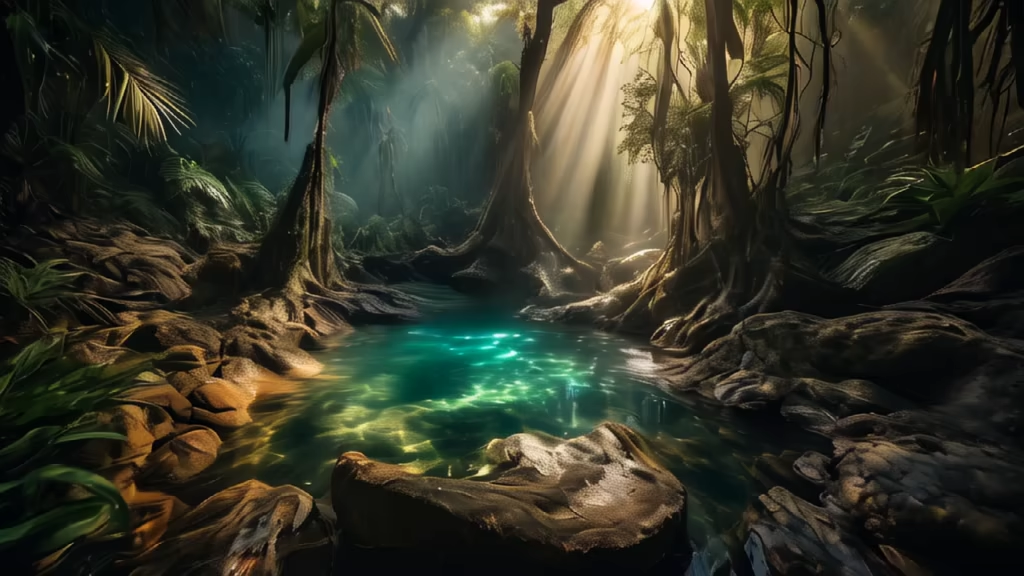
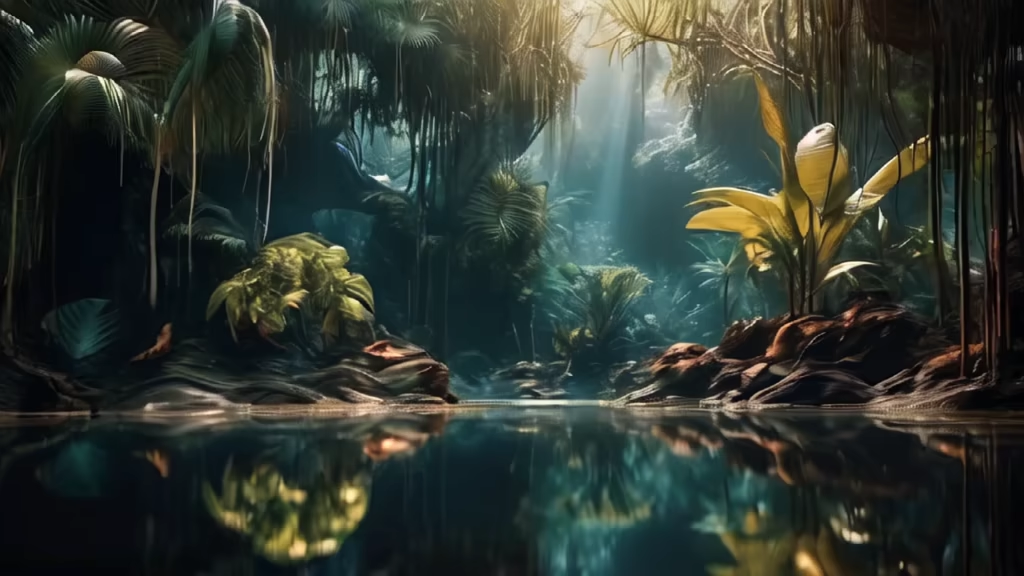
Prompt: Asian magical girl big eyes brown hair delicate facial features lace skirt short hair long legs stockings maid gorgeous Fluffy fashion Selkirk with curly, puffy hair, grey eyes, Octane Render, large heart-shaped in the background pro+
Style: Line Art


Prompt: Envision Lingyun's journey, crossing vast mountains and meandering rivers, encountering diverse celestial beings and mythical creatures that breathe life into the fantastical world he explores.


Prompt: Traditional Chinese architecture, Taoist temples, best quality, HD quality, greatest works,
Style: Fantasy Art
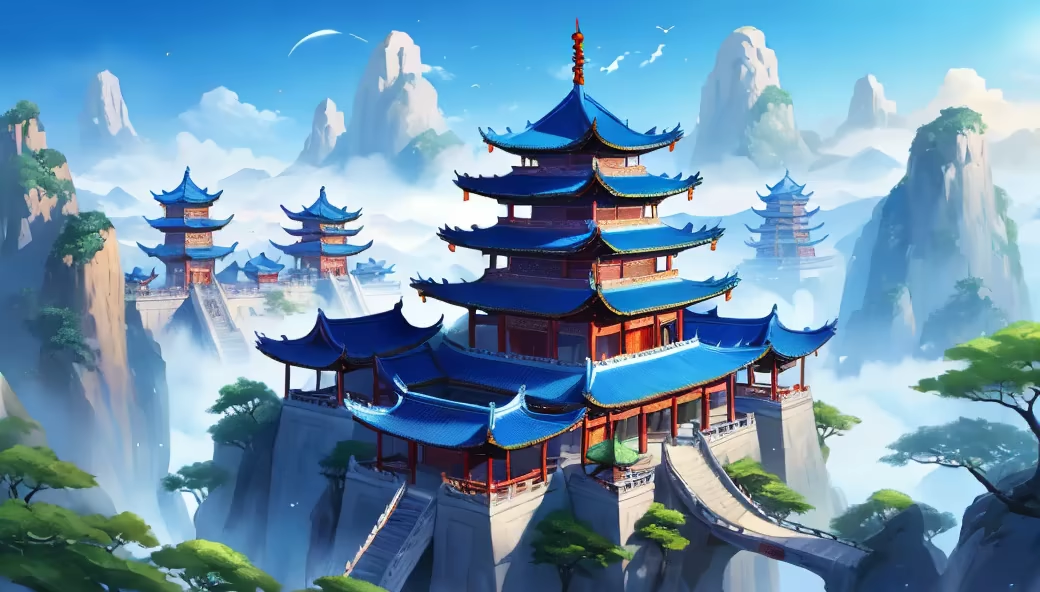
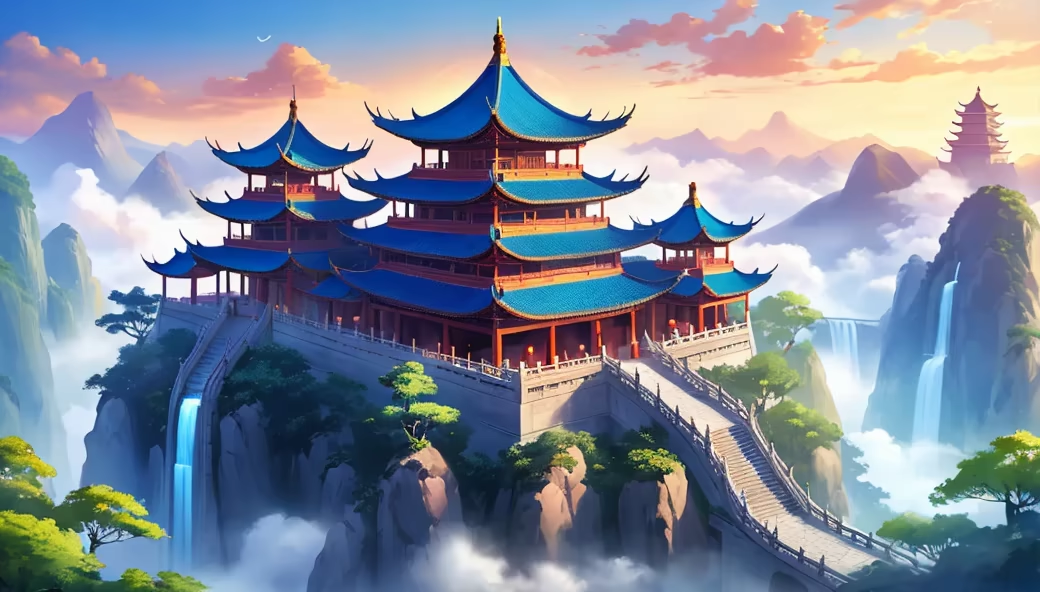
Prompt: Traditional Chinese architecture, Taoist temples, best quality, HD quality, greatest works,
Style: Fantasy Art


Prompt: In a distant celestial realm, envision a young cultivator named Lingyun, immersed in profound study, surrounded by ancient tomes. The ethereal atmosphere resonates with mystical energy.


Prompt: Amidst the tranquil lake and mountain scenery, Li Qingzhao finds inspiration, infusing her creations with poetic elegance.


Prompt: Use serene landscapes, harmonious communities, and a sense of utopia to convey the idea of a perfect universe.


Prompt: Chinese landscape, light ink, atmosphere, mountains and water, simplicity, grandeur, cover, lighter colors


Prompt: Create a vivid visual representation that encapsulates the essence of self-discovery, revealing the true self within. Capture the journey of introspection and personal growth, using symbolic elements such as a reflective mirror, intricate pathways, and evolving landscapes to convey the evolving nature of one's identity. Infuse the image with a sense of authenticity, inner harmony, and the transformative power of self-awareness.




Prompt: Generate an image of a tranquil Bonsai tree surrounded by softly diffused light, evoking a sense of serene stability and balance.


Prompt: Mountains, winding and winding, wide rivers, peaks, trees, sunshine, river valleys, clear water flow, mirrors, flowers and plants on the shore, stones, the beauty of nature, grandeur, embrace, rushing down, singing, landscape painting, nature, supernatural craftsmanship, eternity.
Style: Fantasy Art


Prompt: A painting in the style of Li Wei Zhang featuring [subject], [location], [time of day], [angle], with fluid and delicate brushstrokes, [soft colors palette], balanced composition, evoking a sense of tranquility and connection with nature

